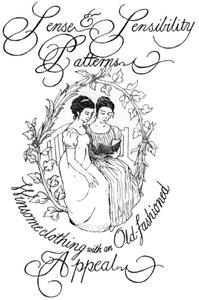How to Make a Pattern From an Original Garment
Question: Can I create a pattern from a favorite dress, blouse, or skirt without taking the original apart?Answer: It can be done -- and it only takes patience and a few tools!This tutorial is for folks who have a garment they'd love to reproduce as closely as possible. We've all had a favorite dress or blouse that fit us just right, haven't we? We wear it for years until it is almost worn out, and then we mourn the fact that we can't buy a replacement, since the design has long since been retired from the original store or catalogue. So what's an seamstress to do? Take a pattern and recreate the garment!* [Note: The instructions below are for a dress but will work just as well for blouses or skirts.]The following is a list of tools I consider must-haves for this project:
Cardboard cutting surface (those ones that fold up like an accordion are great) or another large surface you can pin into (like a quilted cork board).
Lots of pins (heavy-duty quilting pins are best)
Good quality interfacing that comes on a wide roll (you can get "Swedish Tracing Paper" by the roll at Clotilde -- it's sturdy interfacing made for these kinds of projects).
Pencil with a soft lead (so you don't have to push down too hard for a good, dark line).
Now, get ready to do a bit of a dance with the dress you want to copy! This takes slow, patient work, but it is worth it if you have a favorite dress you'd like to reproduce!
First, turn the dress wrong side out. Fold the bodice in half vertically so that you have a center front fold--armholes and shoulder seams should match. Pin the dress together to keep from losing the shoulder and underarm seam lines. Also pin around the neckline. This is tricky, especially if you have tighter sleeves. The dress won't want to lie down totally flat. That's okay. Just do your best.
Now, roll out a length of your interfacing long enough to fit the bodice top to bottom. Lay the dress out on top of the interfacing, then pin it directly to the cutting board through the paper. Do your best to keep the center front and the seam lines straight. If something won't lie flat, just leave it for later. For instance, you can pin the bottom of the bodice down, the center front, the side seams, and the armhole. If the shoulders won't lie flat, just leave them be for the moment. Note: If the dress has darts, see special instructions below!
Fold the skirt up out of the way, but bunch it so that it doesn't cover the outline of your bodice. Trace around the edge of your bodice as far as you can. If need be, unpin the bottom section in order to get the shoulder/neckline area to lie flat -- AFTER you've already traced the bottom section, of course! Neatly pin down the shoulder/neckline area and trace them. Once you've traced around the entire bodice, unpin the dress and mark the pattern piece with its name and note the seam allowances (1/2", 5/8" etc.).
Repeat with the bodice back, skirt front and back. Also use this method with the sleeves if they are fitted sleeves. For puffed sleeves, you will actually need to measure the fullness of the sleeve and compare it to the circumference of the armhole. Let's say the armhole is 15" and the sleeve is 20" -- that means you have 5" more in the curve of the sleeve than you do in the armhole-- 2.5" front and back. Use a curve tool to create the top of the sleeve, but use the method above to create the bottom edge and side seam (if they are ungathered--for a sleeve gathered on the bottom as well as the top, follow the instructions for the upper curve to create the lower edge). This is not as hard as it sounds--it just takes some thinking and calculating! Ditto gathered skirts -- trace the bottom and the sides up as far as you can, then measure the top and draw it in place, marking where the gathers go.
If you have darts, you need to take an extra step to get them in place on your interfacing. Before tracing the entire bodice, cut out a rough rectangle of interfacing large enough to contain the entire bodice, plus two inches on either side. Lay the interfacing over the bodice so you can see through it to the dart. Pin the dart in place in your interfacing, just as if you were going to sew the dart, matching it to the original dart on the dress. With the dart pinned in place, put the interfacing rectangle down on the cutting board and pin the bodice to it as described above, taking care that the dart on the dress is exactly over top of the dart you made in the interfacing. Now trace the rest of the bodice as instructed. When finished, mark the dart and unpin it. When you unpin and spread the dart, you'll see that the sides of your bodice angle out, exactly as they should, since they'll be pulled in when you sew the dart in your new dress.
Jennie Signature
With a little trial and error, you'll soon be a pro at recreating favorite garments. It really is easy--just takes some time and lots of patience!Warmly,* Please note that these instructions are for personal, private use only. It is not kosher to take a current design and produce knock-offs for sale!


